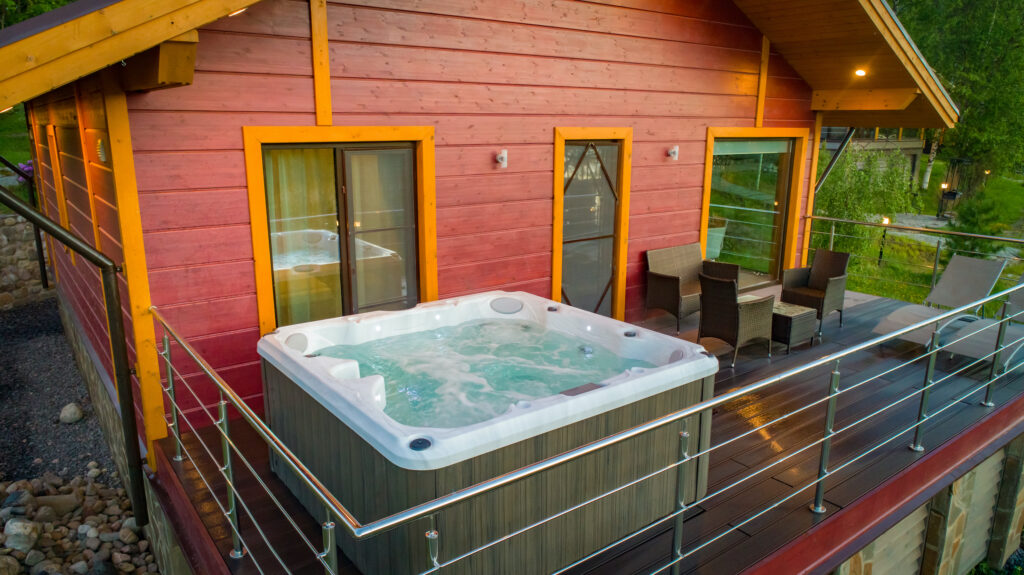Hot tubs are a luxurious way to indulge in some enticing relaxation during your downtime. Add jets to the setup and you can enjoy a welcome massage too, though hot tub jets offer an additional benefit as well.
A hot tub heats up faster if the jets are turned on. This is because the water circulates with the jets on, which evenly disperses heat and prevents cold water from being trapped in the hot tub pipes.

As the water circulates, it forces cold water in the hot tub and its pipes to mix with the warm water in the tub. This can make a significant difference when trying to reduce heating time.
How long does it take to heat up a hot tub?
In general, hot tubs can heat water between 3°C and 6°C per hour. The length of time a hot tub takes to heat up will vary depending on a number of factors but can range on average from three to eight hours.
The larger the hot tub is and the less powerful the tub’s heater is, the longer it will take to heat up. The position of the hot tub can also affect the heating time, as exposure to the elements such as wind or snow will slow down the heating time.
Other factors that will result in the hot tub taking longer to heat up include the jets being off or the hot tub cover being off. Additionally, the temperature of the existing water in the tub or from the filling hose, as well as ambient air temperature will also affect heating time.
What are some ways to reduce heating time?
Maintenance plays a role in hot tub heating times. Ensuring a hot tub is properly serviced and keeping the filters clean will help reduce the time it takes to heat up the water.
To minimize the heating time required for a hot tub, make sure all the jets are turned on and that the heater is sufficiently powerful. The existing heater can be replaced with a more powerful one if desired, in order to reduce the heating time.
Another key way to reduce the heating time is to place a cover on the hot tub, which will help prevent heat escaping into the atmosphere. There are a range of covers available, with some covering just the top and others covering the whole hot tub.
It’s best to go with a quality thermal cover that will not only trap heat inside but help the hot tub retain heat for longer, even when the heater is off. Just make sure the cover fits well so that as little heat as possible can escape from the hot tub.
Make sure the hot tub is sufficiently sheltered from the elements too, as wind, snow and rain all play their part in cooling down the water temperature. You can purchase or create windbreaks to block wind, as well as utilize trees or fencing as a windbreak.
What not to do when heating a hot tub
Though the temptation may be strong to fill the hot tub with hot water, the recommended advice is to avoid doing this. Though it may speed up the heating process, the tub can be damaged by filling it directly with hot water.
It is not recommended for hot tub water to exceed more than 104 degrees Fahrenheit at a maximum. This is not only to protect the health of hot tub users but also to protect the tub itself.
Adding hot water directly to the tub can cause damage to elements such as the jets, the pump and the filter, as well as potentially damaging the lining and the acrylic. It may even cause the hot tub to start melting.
The jets should also not be turned on until the hot tub is full of water, as they can be damaged if they aren’t completely submerged.
It is also important to make sure that the hot tub isn’t filled with water that is too soft or too hard. Extremes of either can damage the hot tub, with softened water potentially corroding metal in the hot tub and hard water potentially causing scaling.
Hot tubs do require a certain amount of calcium in the water (which hardens the water) to work efficiently. The key is to regularly test the hot tub water and get the correct balance of chemicals in the water as recommended by the tub manufacturer.
